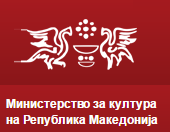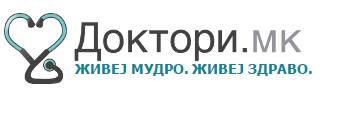JSER Policies
JSER Online
JSER Data
Frequency: quarterly
ISSN: 1409-6099 (Print)
ISSN: 1857-663X (Online)
Authors Info
- Read: 47296
|
ПРОЦЕСОТ НА ОДДЕЛУВАЊЕ И ИНДИВИДУАЛИЗАЦИЈА КАКО ФАКТОР НА РИЗИК ВО ПСИХОСОЦИЈАЛНИОТ РАЗВОЈ НА ЛИЦАТА СО ФИЗИЧКА ПОПРЕЧЕНОСТ
Симона Р. ОЖЕК |
|
THE PROCESS OF SEPARATION AND INDIVIDUATION AS THE RISK FACTOR IN PSYCHOSOCIAL DEVELOPMENT OF PERSONS WITH PHYSICAL DISABILITIES
Simona R. OZHEK
Centre for Education and Rehabilitation of Physically Handicapped Children and Adolescents Kamnik, Slovenia |
|
|
|
|
|
|
|
|
|
1. Вовед |
|
1. Introduction |
|
Пред десет години, кога почнав да работам како едукатор и психотерапевт со младинци кои имаа физичка попреченост, забележав интересен феномен во нивното однесување. Со ова главно мислам на нивниот начин на функционирање, кое беше евидентно во нивната пасивност и зависност, дури и кога немаше основа за тоа, со оглед на нивните физички и ментални капацитети. Младинците, кои беа со физичка попреченост од раѓање, но ги имаа зачувано своите интелектуални капацитети, се покажа дека се помалку развиени отколку што би можеле со обѕир на нивните капацитети и можности. Секако дека многу фактори придонесуваат за ова, а статијава ги презентира во светлината на процесот на одделување и индивидуализација. Најмногу од сè, забележав дека младинците не поседуваа многу искуства во различни области, дека воспитувањето, образованието и третманот што ги добиваа од родителите и професионалците (лекари, физиотерапевти, наставници, едукатори и педагози) беа претерано заштитнички. Подоцна сфатив дека претераната заштита е еден од главните фактори кои го блокираат процесот на одделување и индивидуализација, и дека не можеме да влијаеме врз намалувањето на мобилноста на младите, меѓутоа можеме да влијаеме врз овие два фактора. Отежнувањата во процесот на одделување и индивидулизација претставуваат закана за развивање на автономна и независна личност, а кај децата и младинците со физичка попреченост, овој страв е добро познат. |
|
Ten years ago, when I started working as an educator and psychotherapist with youths that have physical disablity, I noticed some interesting phenomena in their behaviour. With this I mostly mean their way of functioning, which was evident in their passivity and dependence, even when there were no grounds for this with regard to their physical and mental capacities. The youths, which were physically disabled since their birth, but had their intellectual capacities preserved, appeared to be less developed than they could be due to their capacities and possibilities. Of course many factors contributed to this, and the article presents them in the light of the separation and individuation process. Most of all, I was noticing that the youths did not possess many experiences in different areas, and that the upbringing, education and treatment they received from their parents and the professionals (medical doctors, physiotherapists, teachers, educators and pedagogues) was overprotective. Later on, I realized that overprotection is one of the main factor, which hinder the process of separation and individuation, and while we cannot influence the reduced mobility of the youths, we can influence these two factors. Hindrances in the process of separation and individuation present a threat to developing an autonomous and independent personality, and for children and youths with physical disabilities, this fear is well-founded. I present the reasons in this article. |
|
|
||
|
|
|
|
|
2. Процес на одделување и |
|
2. The process of separation |
|
Теоријата за одделувањето-индивидуализацијата на детскиот развој од Маргарет С. Малер претставува важен теоретски концепт за детскиот развој. Малер е важен претставник на теоријата за односите кај предметите и таа нагласува дека детската внатрешна структура се развива низ односи со другото значајно и преку процесот на интернализација. Оваа модерна психоаналитичка теорија го помести фокусот од интернализиран конфликт до конфликт со другото значајно.
Нормалната симбиотска фаза и фазата на одделување-индивидуализацијата се важни фази кои содржат четири потфази:
Нормалната симбиотска фаза е периодот кога детето е свесно за својата мајка (Предметот), но нема чувство на индивидуализација. Детето и мајката се едно и постои бариера меѓу нив и останатиот свет.
Оваа фаза следи по нормалната аутистичка фаза, која прикажува халуцинирачка конфузија и потрага за рамнотежа при задоволување на потребите, а се јавува во вториот месец од животот на новороденчето. Транзицијата на детето од корисната, нормалната симбиотска фаза во фазата на диференцијација, во која детето почнува да се диференцира себе си од Предметот. Таткото прифаќа активна улога повикувајќи го детето во нормалната симбиотска фаза. По ова следи фазата на практикување, која е условена од развојот на моторниот апарат. Детето активно почнува да истражува, се оддалечува од Предметот и стекнува искуства. Во текот на процесот на истражување и експериментирање, детето се сретнува со многу опасни ситуации и бидејќи сè уште не развило чувство на постојаност на предметите (т.е. дека Предметот ќе остане достапен за него ако си замине од него за кратко), тоа постојано му се враќа на Предметот за да добие позитивна енергија, заштита и смиреност од него и за да го продолжи своето практикување и истражување. Оваа фаза се нарекува повторен приод. Во текот на практикувањето и истражувањето, реакциите на Предметот кон детето се од голема важност. Ако Предметот реагира претерано заштитнички или на премногу агресивен начин, без да понуди поддршка или смиреност, многу е веројатно да го забави развојот на детето. Ако на некоја од развојните фази се појави застој од каква било причина, постои значителна можност за развој на организација на патолошка личност во детето. Забавената транзиција во нормалната симбиотска фаза предизвикува организација на психичка личност; ако транзицијата од нормалната симбиотска фаза кон фазата на одделување-индивидуализација е забавена, тоа носи организација на гранична личност; ако пречката се јави во текот на фазата на одделување-индивидуализацијата, тоа предизвикува организација на невротична личност. (2) |
|
The Separation-Individuation Theory of Child Development by Margaret S. Mahler presents an important theoretical concept of child development. Mahler is an important representative of Object Relations Theory, and she stressed that the child's inner structure develops through relations with the significant others and through the process of internalization. This modern psychoanalytical theory shifted the focus from the internalized conflict to the conflict with the significant others.
The Normal Symbiotic Phase and the Separation-Individuation Phase are important phases, which comprise four sub-phases:
The Normal Symbiotic Phase is the period when the infant is aware of his mother (the Object), but does not have a sense of individuation. The infant and the mother are one, and there is a barrier between them and the rest of the world.
This phase follows the Normal Autistic Phase, which shows hallucinatory confusion and searching for balance in satisfying the needs, and occurs in the second month of the infant’s age. The infant transitions from the beneficial Normal Symbiotic Phase into the Differentiation phase, in which he starts to differentiate between himself and the Object. The father adopts an active role by inviting the child out of the Normal Symbiotic Phase. This is followed by the Practicing phase, which is conditioned with the development of the motoric apparatus. The infant begins to explore actively, becomes more distant from the Object and gathers experiences. During the process of exploring and experimenting, the child comes across various dangerous situations, and because he has not yet developed a sense of Object Constancy (i.e. that the Object will remain available to him if he goes away from it for a short period), he keeps coming back to the Object to receive positive energy, protection and reassurance from it in order to continue his practicing and exploring. This phase is called Rapprochement. During the period of practicing and experimenting, the reactions of the Object towards the child are of utmost importance. If the Object reacts in a overprotective or too aggressive manner, without offering support and reassurance, this is very likely to hinder the development of the child. If at any of the developmental phases there occur hindrances for whatever reason, there is a significant possibility for development of a pathological personality organization in the child. A hindered transition to the Normal Symbiotic Phase causes a psychotic personality organization; if the transition from the Normal Symbiotic Phase towards the Separation-Individuation Phase is hindered, this brings about a borderline personality organisation; if the hindrance occurs during the Separation-Individuation Phase, this causes a neurotic personality organization. (2) |
|
|
||
|
|
||
|
|
|
|
|
3. Фактори кои влијаат врз процесот |
|
3. Factors which influence the process of |
|
Одовде ги презентирам карактеристиките на психолошкиот развој кај децата со физичка попреченост, како и некои развојни фактори за таквите деца, кои влијаат врз развојот на нивните психолошки структури. |
|
Hereinafter, I present the features of psychological development in children with physical disabilities, as well as some of the developmental factors for such children, which influence the development of their psychological structures. |
|
|
|
|
|
3.1. Влијанието на физичката |
|
3.1 The Influence of Physical |
|
Улогата на развојот на моторниот апарат за интегрираниот развој на една индивидуа е многу важен. Забавениот моторен развој битно придонесува за попреченост во другите области, како и за развојот на психолошката структура. Моторниот развој игра улога во воспоставување на Его-структурата, бидејќи преку интеграцијата на сетилната перцепција и влијанието врз динамиката на идентификацијата се формира. Его-структурата, од друга страна, е вградена во сетилно-моторната шема со мешање на сетилните содржини со моторното дејство (2). Затоа, сетилните и моторните дисфункции кај децата со физичка попреченост претставува многу голем фактор на ризик. Важноста на сетилната перцепција може да се види во прифаќањето на стимулансите и претставува основа за воспоставување контакт и приврзаност. Од оваа основа, се развива доверба и симбиоза, кои се битни за успешен почеток на процесот на одделување и индивидуализација. Сетилните дисфункции индиректно придонесуваат за непотполниот процес на одделување и индивидуализација. |
|
The role of developing the motoric apparatus for integrated development of an individual is very important. A hindered motoric development substantially contributes to disabilities in other areas and, as such, also to the development of the psychological structure. The motoric development plays a role in establishing the Ego structure, for through the integration of sensory perception and affects the dynamics of the Id are formed. Ego structure, on the other hand, is built into the sensory-motoric schemes by mixing the sensory contents with the motoric action (2). Therefore, sensory and motoric malfunctions in children with physical disabilities present a very big risk factor. The importance of sensory perception can be seen in accepting stimuli and presents the basis for relating, contact and attachment. From this basis, trust and symbiosis develop, which are crucial for a successful beginning of the separation and individuation process. Sensory malfunctions indirectly contribute to the unfulfilled process of separation and individuation. |
|
|
||
|
|
|
|
|
3.2. Влијанието на примарната средина |
|
3.2 The Influence of Primary Environment |
|
Постојат бројни видови на реакции на деца со физичка попреченост, но во оваа статија ги презентирам оние кои директно влијаат врз процесот на одделување и индивидуализација, кој е важен за развој на детската психолошка структура. Симбиозата е забавена кај детето со физичка попреченост, бидејќи во оваа фаза семејството (посебно мајката) сè уште се соочува со фактот дека нивното дете е поинакво од другите деца. Шок, конфузија, вина, страв, тага-ова се само некои од емоциите кои предизвикуваат проблеми кај мајката при покажување емоционална поврзаност со нејзиното дете, бидејќи таа сè уште е во процесот на адаптација на ситуацијата, а тоа се случува постепено. Во прилог на тоа што мајката има проблеми со своите ставови кон детето, проблемите се продлабочуваат кога детето, заради своите телесни атрибути, покажува слични проблеми во своите ставови кон мајката, правејќи таа да се чувсвува дека не е доволно добра и успешна мајка-во периодот кога најмногу % треба таква поддршка од детето. Ова прави круг, а позитивната внатрешна промена и симбиозата се доведуваат во прашање. Дополнителни проблеми се предизвикани од таканаречените присилни одделувања, кога детето е отргнато од сигурноста на домот и постојаноста на Предметот заради бројни хоспитализации. Медицинските третмани го присилуваат детето на бројни контакти со туѓи лица во најчувствителниот период, во време кога му треба постојана врска само со едно лице, т.е. неговата мајка. Хоспитализациите и дополнителната загуба на мобилноста што е сврзана со нив, игра исто толку важна улога како примарната болест или состојба (4). Во текот на процесот на индивидуализација и одделување, таткото игра, исто така важна улога, бидејќи го повикува детето надвор од симбиозата за да практикува и експериментира во активности надвор од неа. Кај деца со физичка попреченост, практикувањето е забавено и таткото тешко се справува со својата улога или не може да се идентификува со неа (3). Затоа, детето останува во симбиозата и има проблеми во транзицијата низ другите фази на процесот на одделување и индивидуализација. Во прилог кон опасноста детето да одлучи да остане во симбиозата, често се случува родителите (главно заради чувството на срам и вина) да се повлечат во сопствениот свет и стануваат социјално изолирани. Овој вид адаптација на живот со дете со физичка попреченост дополнително ги влошува можностите детето да практикува, експериментира и стекнува искуства за реалниот свет. Здравјето и физичката благосостојба играат важна улога кај децата со физичка попреченост. Примарно, важно е да се обезбеди сигурност за детето, бидејќи секогаш постои страв дека нешто би можело да му се случи заради намалената мобилност. Меѓутоа, во својата претерана грижа, родителите многупати се однесуваат претерано заштитнички кон детето и во ситуации кога нема потреба. Претерано заштитничкото воспитување има специјално место во контекст на процесот на одделување и индивидуализација кај децата и младинците со физичка попреченост. Бројни автори утврдија дека децата и младинците со физичка попреченост имаат тенденција да бидат претерано повеќе заштитени од здравите деца и младинци. (5, 6, 7) |
|
There exist numerous types of reactions to children with physical disabilities, but in this article I present those which directly influence the process of separation and individuation, which is so important for the development of the child’s psychological structure. Symbiosis is hindered for the physical disabled child, because in this phase the family (particularly the mother) is still coming to terms with the fact that their child is different from the normal children. Shock, confusion, guilt, fear, sadness-these are only some of the emotions that cause problems for a mother in showing a positive emotional attachment to her child, for she is still in the process of adaptation to the situation, and this takes place gradually. In addition to the mother having problems with her attitude towards the child, the problems deepen further when the child, due to its constitutional attributes, shows similar problems in his attitude towards the mother, making her feel that she is not a good enough and successful mother-in the period when she most needs to receive such reassurance from the child. This comes full circle, and a positive interchange and symbiosis become questionable. Additional problems are caused by the so-called forced separations, when the child is taken away from the safety of home and Object Constancy due to numerous hospitalizations. Medical treatments force the child into numerous contacts with foreign people in this most sensitive period, at a time when he needs a constant relationship with only one person, i.e. his mother. Hospitalizations, and additional loss of mobility that is related to them, play just as important role as the primary disease or condition (4). Numerous authors have found that children and youths with physical disabilities tend to be more overprotected from the healthy children and youths. (5, 6, 7) |
|
|
||
|
|
||
|
|
|
|
|
4. Заклучок |
|
4. Conclusion |
|
Во Словенија постои едно истражување (7), кое се однесува на развојот на психолошката структура кај децата и мадинците со физичка попреченост. Ова независно истражување беше презентирано во рамките на магистерска теза и потврди дека процесот на одделување и индивидуализација кај децата и младинците со физичка попреченост е позабавен отколку кај здравите деца и младинци. Овде нема да презентираме резултати од истражувањето во детали, но може да претпоставиме од тоа што беше презентирано дека развојот на независноста и автономијата е загрозен кај децата и мадинците со физичка попреченост и дека директно влијае врз психосоцијалните тешкотии кои можат да се видат кај децата и младинците со физичка попреченост. Затоа е потребно да им се посвети специјално внимание на децата и младинците со физичка попреченост на сите нивоа на образованието и воспитувањето. Ова е посебно важно бидејќи физичката попреченост индиректно (влијанието на примарните реакции од средината) и директно (влијанието на самата пречка) влијае врз психолошкиот развој на една индивидуа. Со разбирање на ризик-факторите и со настојување тие да се намалат, можеме да ги намалиме штетните ефекти врз психосоцијалниот развој кај децата и младинците со физичка попреченост, па така да се поддржи развојот на нивната автономија. |
|
In Slovenia, there exists a research (7), which refers to the development of psychological structure in children and youths with physical disabilities. This independent research was performed within the framework of a Master Thesis, and it confirmed that the process of separation and individuation in children and youths with physical disabilities is more hindered than in healthy children and youths. Herewith we will not present the results of the research in details, but we can assume from what was presented that the development of independence and autonomy is endangered in children and youths with physical disabilities, and that it directly influences the psychosocial difficulties which can be seen in children and youths with physical disabilities. Therefore, it is necessary to pay special attention on all levels to education and upbringing of children and youths with physical disabilities if we want to decrease the negative influences on the process of separation and individuation. This is particularly important because physical disability both indirectly (the influence of primary environment reactions) and directly (the influence of the hindrance itself) influence the psychological development of an individual. By understanding the risk factors and striving for their reduction, we can reduce the harmful effects on the psychosocial development of children and youths with physical disabilities and, consequently, support the development of their autonomy. |
|
Citation:Ozhek RS. The Process of Separation and Individuation as the Risk Factor in Psychosocial Development of Persons with Physical Disabilities. J Spec Educ Rehab 2007; 8(1-2):33-41. |
||||
|
|
||||
|
Литература / References |
|
|
||
|
|
|
||
Share Us
Journal metrics
-
 SNIP 0.059
SNIP 0.059 -
 IPP 0.07
IPP 0.07 -
 SJR 0.13
SJR 0.13 -
 h5-index 7
h5-index 7 -
 Google-based impact factor: 0.68
Google-based impact factor: 0.68
10 Most Read Articles
- PARENTAL ACCEPTANCE / REJECTION AND EMOTIONAL INTELLIGENCE AMONG ADOLESCENTS WITH AND WITHOUT DELINQUENT BEHAVIOR
- RELATIONSHIP BETWEEN LIFE BUILDING SKILLS AND SOCIAL ADJUSTMENT OF STUDENTS WITH HEARING IMPAIRMENT: IMPLICATIONS FOR COUNSELING
- EXPERIENCES FROM THE EDUCATIONAL SYSTEM – NARRATIVES OF PARENTS WITH CHILDREN WITH DISABILITIES IN CROATIA
- INOVATIONS IN THERAPY OF AUTISM
- AUTISM AND TUBEROUS SCLEROSIS
- THE DURATION AND PHASES OF QUALITATIVE RESEARCH
- REHABILITATION OF PERSONS WITH CEREBRAL PALSY
- DISORDERED ATTENTION AS NEUROPSYCHOLOGICAL COGNITIVE DISFUNCTION
- HYPERACTIVE CHILD`S DISTURBED ATTENTION AS THE MOST COMMON CAUSE FOR LIGHT FORMS OF MENTAL DEFICIENCY
- DIAGNOSTIC AND TREATMENT OPTIONS IN AUTISTIC SPECTRUM DISORDERS – AN OVERVIEW
















